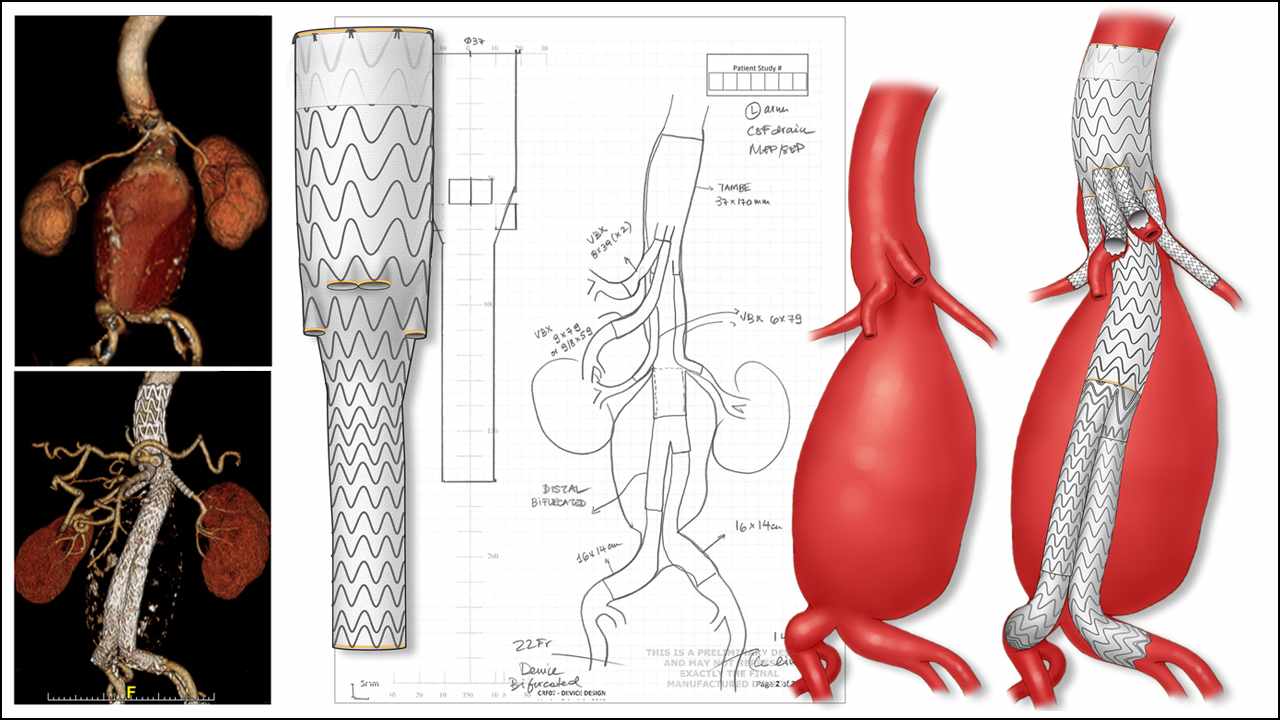-
Featured News
Discovery’s Edge: Using “just in time” technology to treat aortic aneurysms

Arthur Poll was visiting family in Tucson, Ariz., when he felt a sharp pain in his left kidney one evening. The next day he saw a doctor, who scanned his abdomen.
“He said I’ve got good news and bad news for you,” recalls Poll. “The good news is you don’t have kidney stones. The bad news is you’ve got worse than that. You have something we cannot fix.” The 88-year-old had an aortic aneurysm, a balloon-like bulge in the largest artery in the body, which carries oxygenated blood to most of the body’s organs. The aorta normally measures 2 to 3 centimeters across. An aneurysm measuring 5 centimeters in women, 5.5 centimeters in men, is a candidate for surgery. Poll’s measured 12 centimeters —nearly 5 inches.“He said it’s the biggest he’s ever seen,” says Poll. The doctor called it “Inoperable, terminal, at risk of rupturing at any time.” He told Poll he should enter hospice. “He said I can’t help you any,” says Poll. “They wrote me off.” Read the rest of the article on Discovery's Edge.
The 88-year-old had an aortic aneurysm, a balloon-like bulge in the largest artery in the body, which carries oxygenated blood to most of the body’s organs. The aorta normally measures 2 to 3 centimeters across. An aneurysm measuring 5 centimeters in women, 5.5 centimeters in men, is a candidate for surgery. Poll’s measured 12 centimeters —nearly 5 inches.“He said it’s the biggest he’s ever seen,” says Poll. The doctor called it “Inoperable, terminal, at risk of rupturing at any time.” He told Poll he should enter hospice. “He said I can’t help you any,” says Poll. “They wrote me off.” Read the rest of the article on Discovery's Edge.
________________________________
Find more research news on Discovery's Edge.







